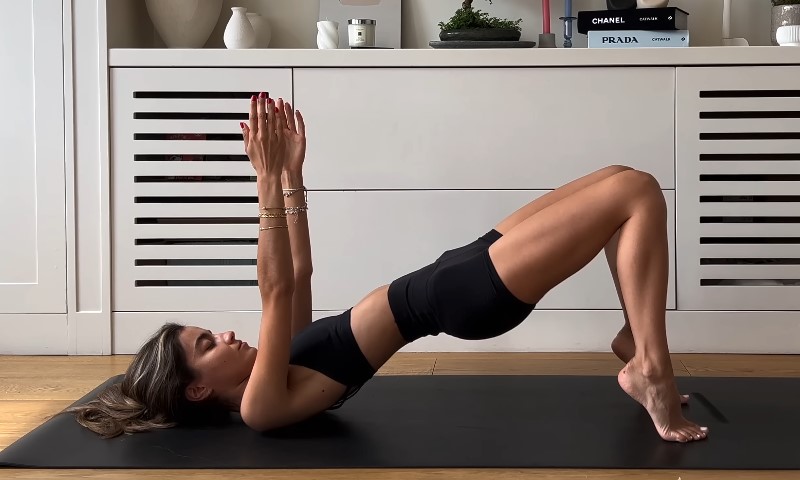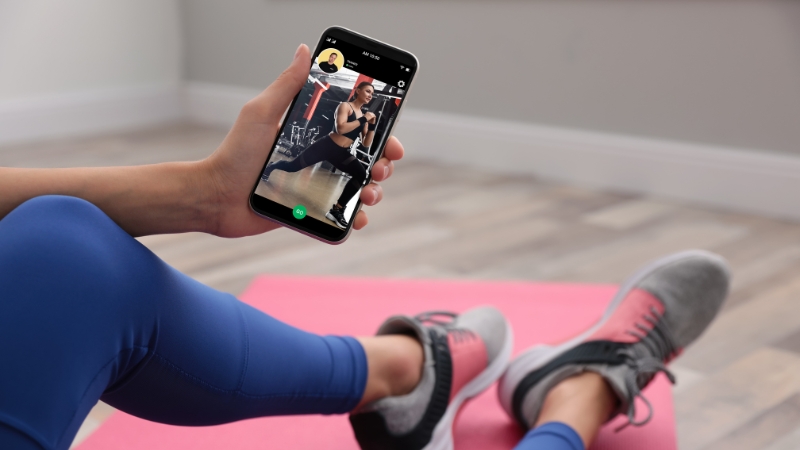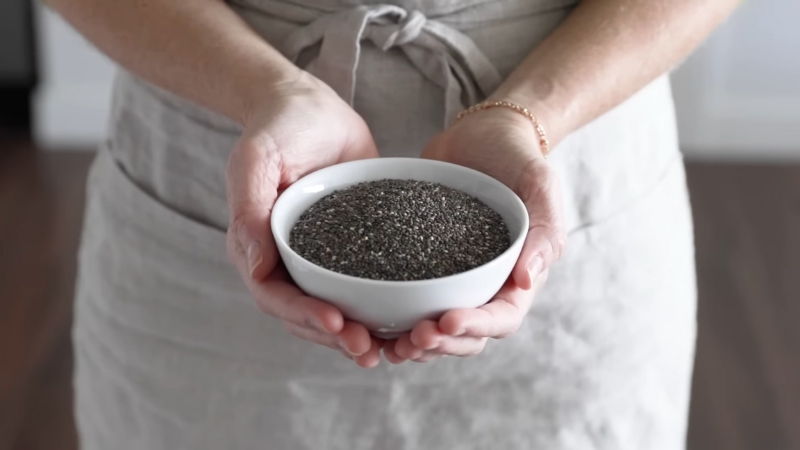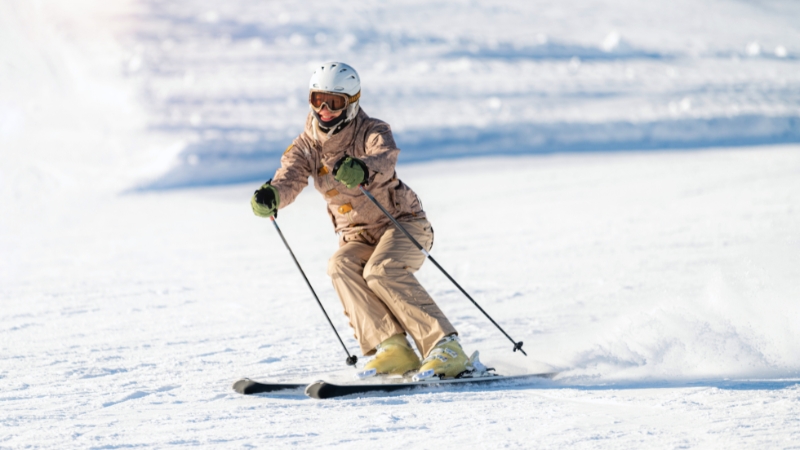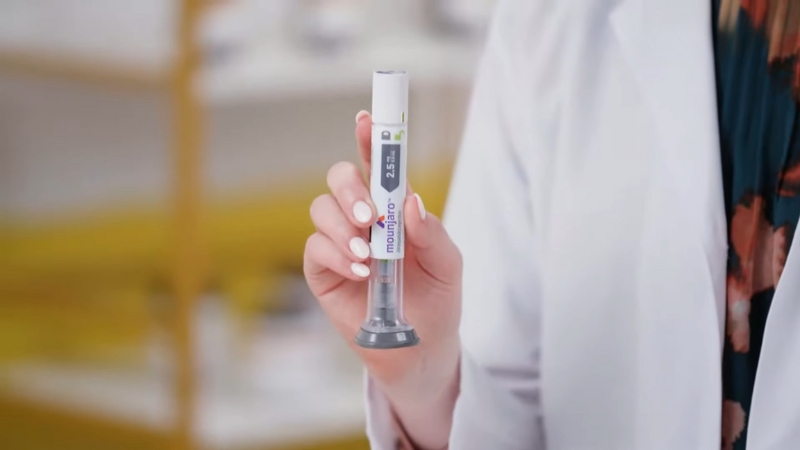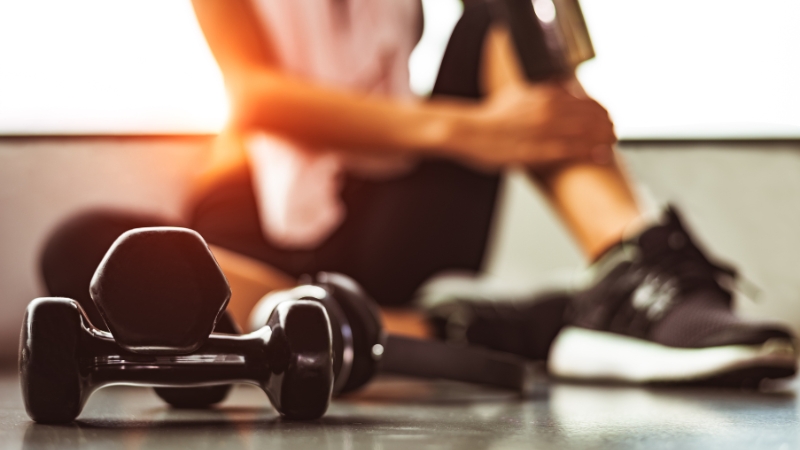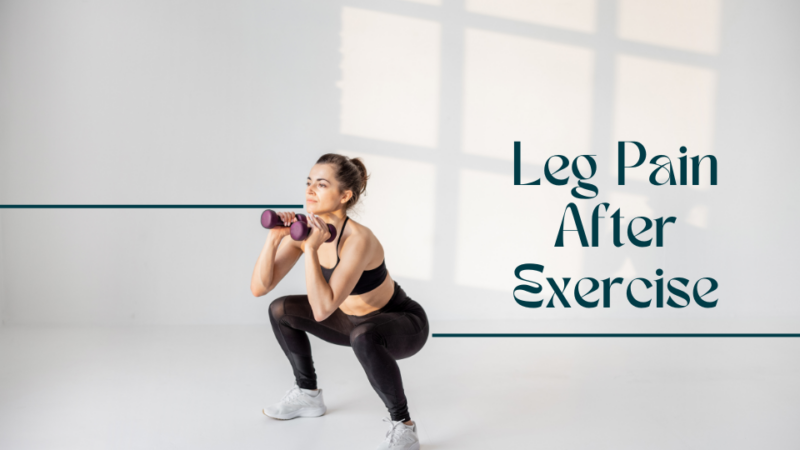
Share Post:
Ever finished a workout feeling fantastic, only to wake up the next day moving like a robot? If you’ve experienced that stiff, aching sensation, you’re likely dealing with post-exercise soreness.
It’s almost a rite of passage for anyone engaging in fitness, from beginners to seasoned athletes. But how do you figure out if it’s just your muscles adapting or a signal to slow down? Let’s see, shall we?
Table of Contents
ToggleWhat’s Really Happening When You Feel Sore?
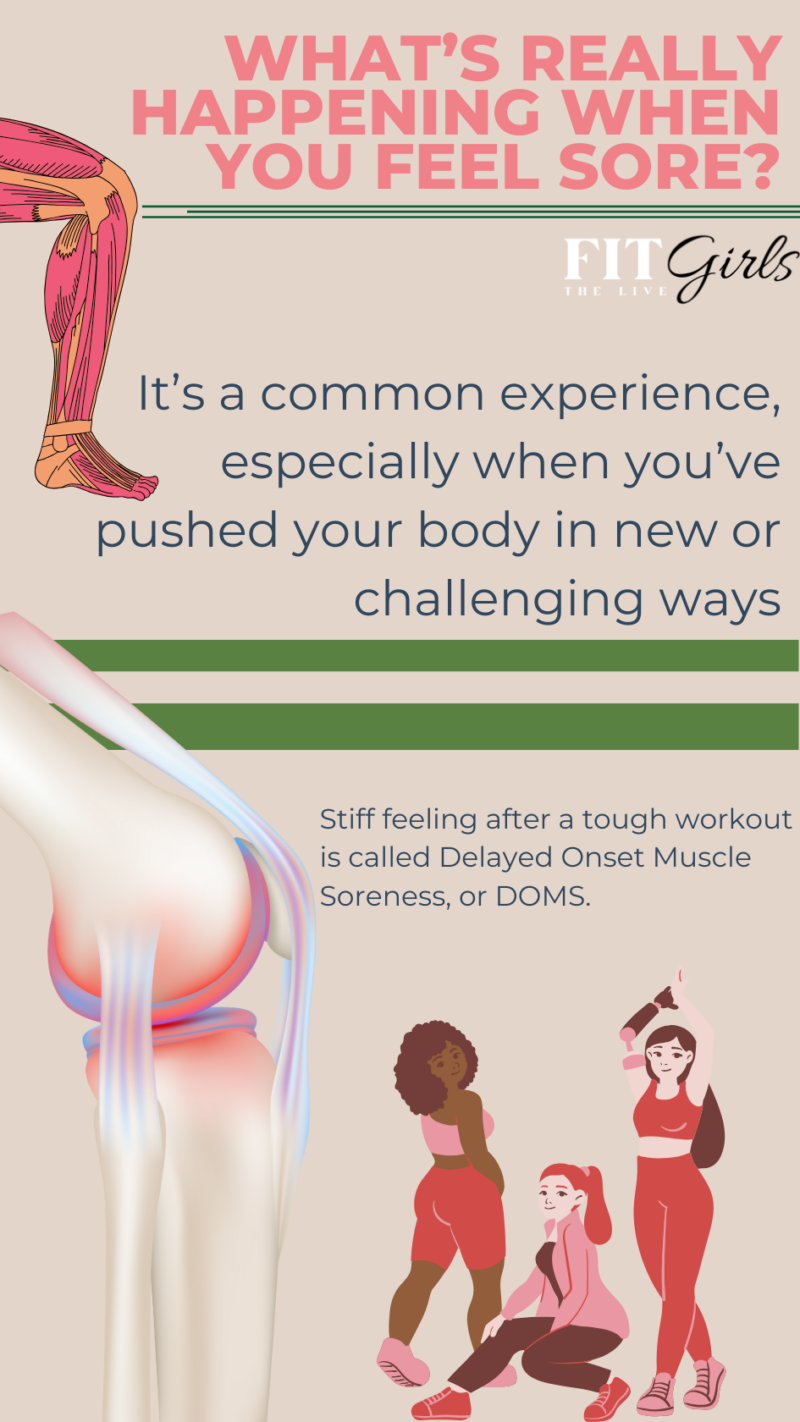
As stated by NHS Inform, that aching, stiff feeling after a tough workout is called Delayed Onset Muscle Soreness, or DOMS.
It’s a common experience, especially when you’ve pushed your body in new or challenging ways. If you’ve ever struggled to sit down after leg day, you know exactly what this feels like.
However, if you’re noticing discomfort in your legs that persists or worsens, it might also be worth consulting a vein specialist in El Paso, as there might be a circulation or vein health problem.
So, why does it happen?
During exercise, especially movements that lengthen muscles under tension, tiny tears occur in the muscle fibers. Your body views this as damage, kicking off a repair process that strengthens the muscles over time. It’s an essential part of growth and adaptation. Eccentric movements (like slowly lowering weights or running downhill) are particularly notorious for triggering DOMS because of the unique stress they place on your muscles.
When It’s Just DOMS
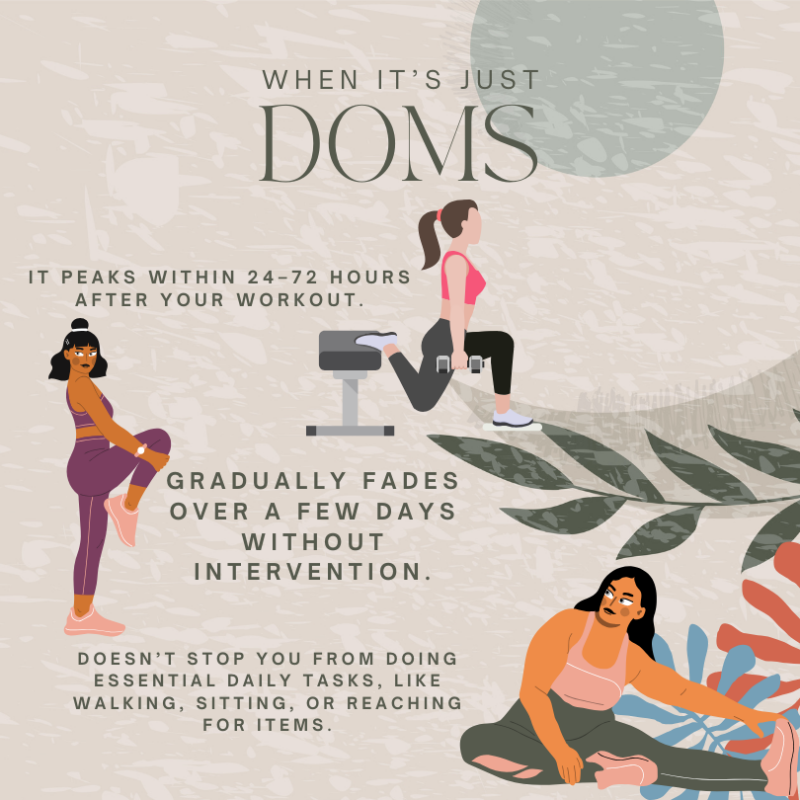
Sure, climbing stairs might feel like a punishment, but you’re still able to get through your day without too much hassle. It’s the kind of pain that makes you chuckle and say, “That workout really worked.”
Here’s what makes it clear that you’re dealing with typical post-workout soreness:
- It peaks within 24–72 hours after your workout.
- Gradually fades over a few days without intervention.
- Doesn’t stop you from doing essential daily tasks, like walking, sitting, or reaching for items.
DOMS often pops up in specific situations:
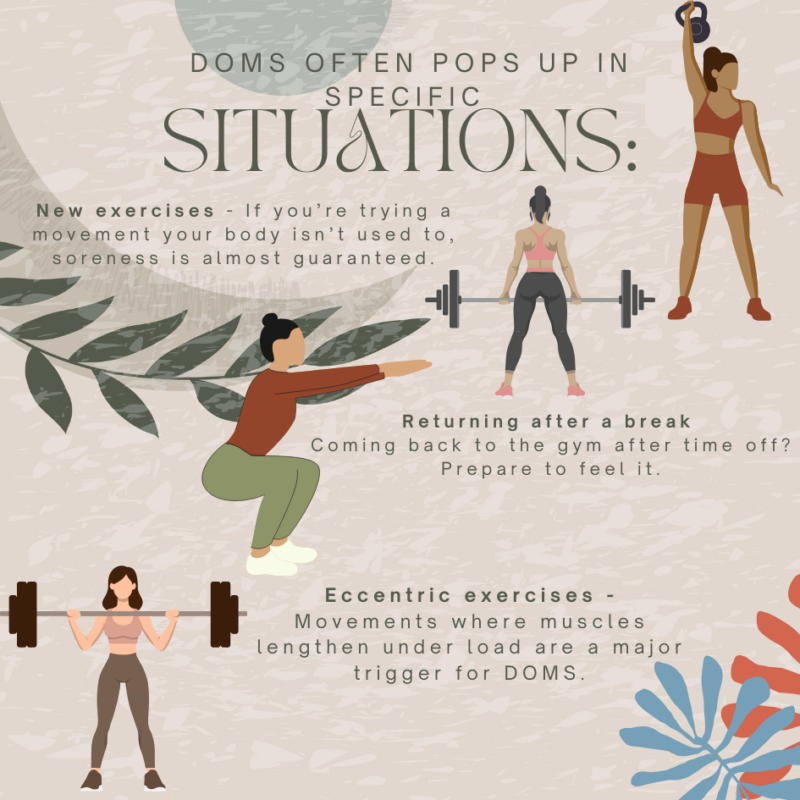
- New exercises – If you’re trying a movement your body isn’t used to, soreness is almost guaranteed.
- Returning after a break – Coming back to the gym after time off? Prepare to feel it.
- Eccentric exercises – Movements where muscles lengthen under load are a major trigger for DOMS.
When It’s More Than Just Soreness
If discomfort lingers longer than it should or makes simple movements difficult, it’s time to pay closer attention. There’s a fine line between the soreness that helps you grow stronger and the kind that signals a problem.
- Pain lasting longer than 72 hours – Normal soreness typically fades within a few days. Anything beyond that might indicate overtraining or injury.
- Significant swelling or redness – If an area feels hot, swollen, or looks unusual, it could be a sign of inflammation or another issue.
- Sharp, stabbing pain – Unlike the dull ache of DOMS, sharp pain is often a red flag.
- Difficulty with everyday tasks – Struggling to walk, bend, or lift items might mean you’ve overdone it.
How DOMS Impacts Performance
According to WD Hospital, when your muscles are stiff and tender, even simple activities like bending, lifting, or stretching can feel tougher than usual. For athletes or those training with specific goals, this can mean adjusting workout plans to avoid overdoing them.
During periods of soreness, your muscles might not function at full capacity. This doesn’t just impact your workouts, it can also affect your day-to-day life. Tasks that typically feel effortless might require more effort, and your range of motion could be limited.
Balancing soreness and performance requires careful planning:
- Rest too much, and you might lose some progress.
- Push through soreness without caution, and you risk overtraining or injuring yourself.
If you’re preparing for a competition or event, avoid intense training close to the big day. Soreness can significantly reduce performance, so give yourself time to recover fully before you need to be at your best.
Does Soreness Mean a Great Workout?
Here’s a common misconception: if you’re not sore after a workout, it wasn’t effective. It’s tempting to equate soreness with progress, but that’s not the full picture.
DOMS indicates that your muscles are stressed, but it’s not a consistent measure of workout quality. Plenty of people make great fitness strides without experiencing significant soreness. As we’ve mentioned it before, factors like your fitness level, workout structure, and recovery habits all influence how your body responds.
What’s important to remember:
- Some muscle damage is necessary for growth and adaptation, but too much can slow recovery.
- Balance is crucial—your body needs enough challenge to adapt, but not so much that it can’t recover.
- Rest and recovery play as big a role in progress as the workout itself.
- Instead of chasing soreness, focus on steady improvements in strength, endurance, or flexibility. Soreness is just one small piece of the puzzle.
How to Manage the Pain
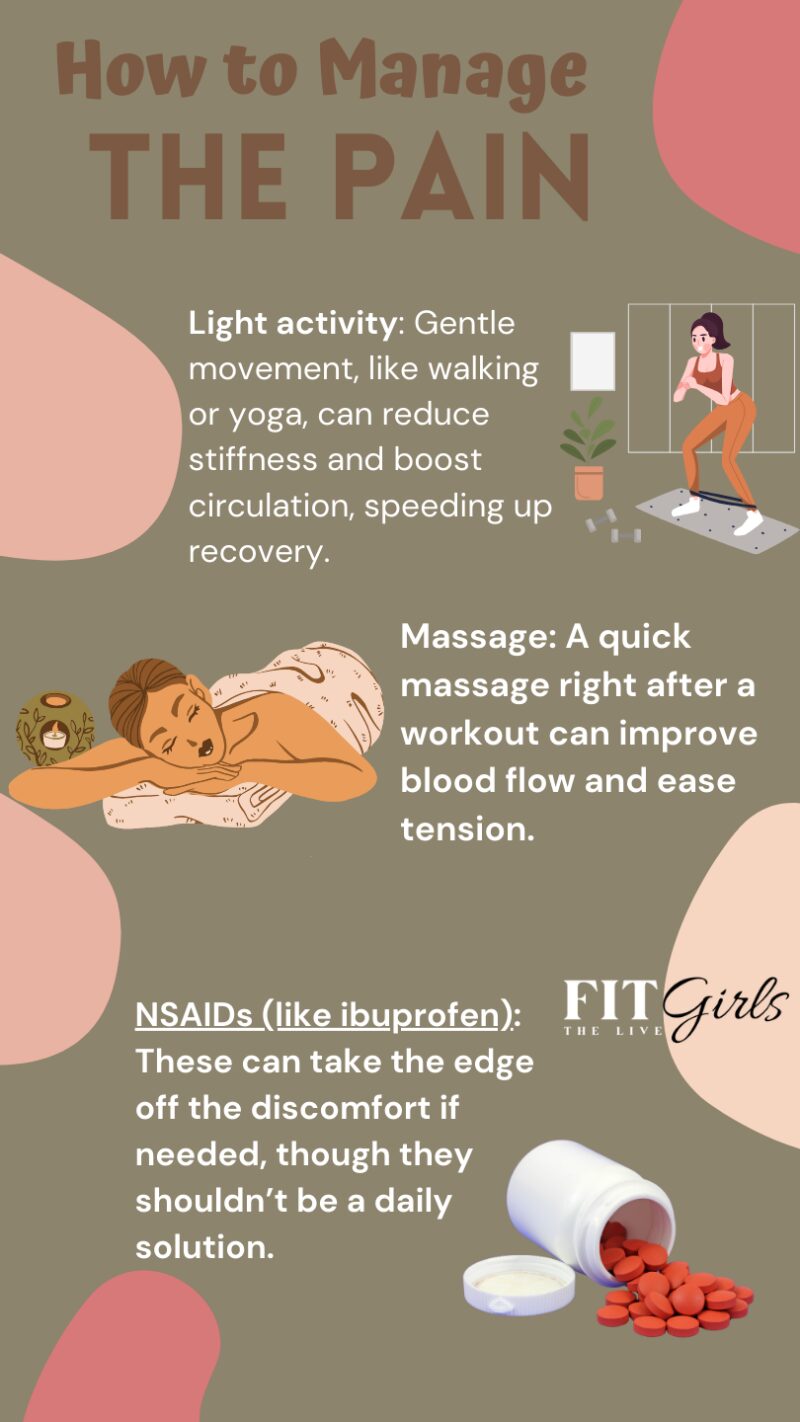
While you can’t always prevent it, a few strategies can help manage the discomfort and keep you moving:
What Helps:
- Light activity: Gentle movement, like walking or yoga, can reduce stiffness and boost circulation, speeding up recovery.
- Massage: A quick massage right after a workout can improve blood flow and ease tension.
- NSAIDs (like ibuprofen): These can take the edge off the discomfort if needed, though they shouldn’t be a daily solution.
What Doesn’t Work Well:
- Cryotherapy: Cold treatments might feel good, but research shows minimal long-term benefit for soreness.
- Static stretching: Stretching before exercise doesn’t prevent DOMS, and stretching after does little to ease it.
- Fancy tools: Devices like electrical muscle stimulators promise reli, butut often lack solid evidence.
If You Want to Stay Ahead of Soreness…
Gradually increase the intensity of your workouts. Sudden jumps in difficulty are a recipe for DOMS. Warm up thoroughly to prepare your muscles for exercise.
And finally, focus on recover: – hydrate, eat well, and prioritize sleep.
If you’re new to exercise or trying something particularly challenging, working with a coach or trainer can make all the difference. They can create a plan tailored to your needs and goals, ensuring you’re pushing yourself in a way that’s both effective and safe.
The Bottom Line
The next time your legs feel like jelly after a killer workout, remember: it’s part of the process. But if something feels off, give yourself permission to rest and recalibrate. Fitness is about the long game, and listening to your body will always pay off in the end.
Sources
1. NHS Info: – Pain and injuries after exercise
2. WD Hospit: – What is Normal Soreness following a Workout?
Related Posts:
- Can AI Help You Get Fit? Real Benefits and Red Flags
- Leg Pain from Poor Circulation? Here Are the…
- Average Weight for a 15-Year-Old Girl: What’s Normal…
- Skinny Caramel Iced Latte Recipe - Refreshment after…
- Knee Pain from Cycling – Is It Avoidable, and How Do…
- Lower Back Pain? It’s Not the End of Your Workouts!



